%20(1024%20%C3%97%20500%20px)%20(11).png)
You love your donors. You appreciate your donors. Your donors are the reason your nonprofit is able to have an impact. But what if your donors start…disappearing?
They don’t disappear because you let them down, or because they’re only allowed to support one nonprofit, or because you emailed them too many times or not enough.
Rather, it’s because the average donor retention rate for nonprofits falls around 40% to 45%. For every ten donors that support you this year, only about four of them will be back next year.
Assuming you’ll lose some donors year over year, you can focus on donor retention. And you should! But you can also focus on donor acquisition. Whether you’re worried about offsetting lapsed donors or you just want to grow your database – or both! – we’ve got some strategies that can help any nonprofit find new donors.
Some of these ideas might be new and some might be reminders. But having been around the donor acquisition block with most of our clients, we can promise that these techniques will bring new supporters right to your door.
Donor Acquisition Strategy #1: Try Face-to-Face Canvassing
This is one of the most traditional methods of nonprofit outreach. While it took a dive during the pandemic years, canvassing in person is surging again as people feel comfortable having close conversations. It involves volunteers that cover a neighborhood, a store or a popular shopping center, or even an event to spread the word about your nonprofit’s mission.
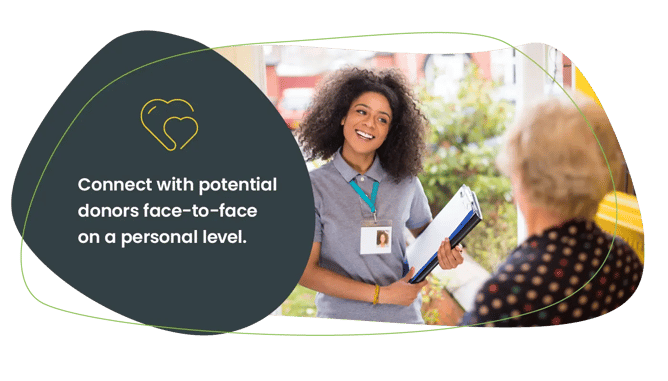 Nonprofits know that creating and nurturing donor relationships is key to long-term success. Beginning that relationship in person, face to face, is advantageous and impactful. According to an organization focused on canvassing, “…it is the most successful method of recruiting committed givers that the world has ever seen.” They also predict that this global method of outreach will rise.
Nonprofits know that creating and nurturing donor relationships is key to long-term success. Beginning that relationship in person, face to face, is advantageous and impactful. According to an organization focused on canvassing, “…it is the most successful method of recruiting committed givers that the world has ever seen.” They also predict that this global method of outreach will rise.
Here are some tips for effective canvassing:
- Equip your team with a consistent, concise, compelling message. It should be focused on the impact your nonprofit has.
- Use each face-to-face opportunity as a chance to have a conversation. Ask questions and listen to the responses. Connect on a personal level.
- What will you ask for? If you’re fundraising, you can collect cash, checks, or even use a mobile swiper to run credit cards. Or you can set a goal to collect a certain number of names and email addresses of new supporters. Don’t dismiss the idea of collecting names for your database! They’ve taken a step to show interest, so then you can…
- ...Enter all donors and prospects into a marketing automation sequence. Start with a thank-you email or text, whether it’s for their donation or their support, and keep moving through the donor journey with regular communications.
- Set goals and measure your progress. Do you want 100 new names or $1,000 dollars? Or both? Track different campaigns – door knockers in a neighborhood or someone at the county fair – and see which is more effective. Over several campaigns, you’ll hone them to be winners.
Donor Acquisition Strategy #2: Leverage Wealth Screening
The title has a little bit of an ick, mean-girl vibe, but in reality, it’s just doing your research so you ask appropriately. It’s using publicly available data to find people who both can give and want to give.
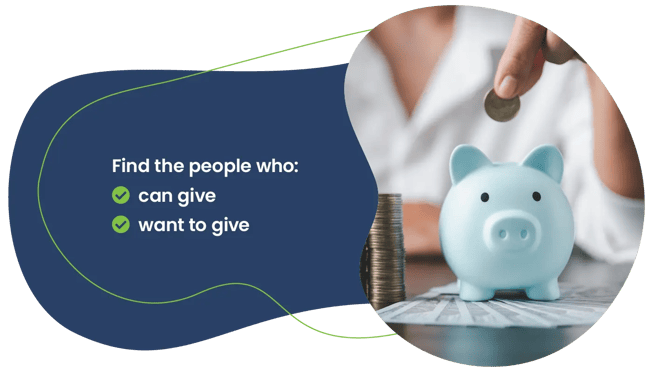 Let’s think about how you could find people who can give:
Let’s think about how you could find people who can give:
- Check their income bracket.
- Review their assets – real estate, stock, etc.
- Consider their demographics. Giving peaks at ages 61-75, ages at which many have accumulated wealth.
- Pay attention to reputations. If you know of a local leader who is generous to local nonprofits, they can also give to yours.
How, then, do you find people that want to give?
- Look at a list of donors to a campaign that’s similar to the nature of one you’d run. If you’re a food bank, look at another food bank's successful fundraising campaign, and check out the donor list.
- You could look at a publicly available list of people who donate to a hospital.
- You could look at the board members of charities similar to yours.
As you see, wealth screening is invaluable when it comes to identifying potential major gift donors, but it’s also helpful in acquiring new donors. CharityEngine partners with WealthEngine to offer advanced wealth screening to our clients, and we calculate a Giving Probability Score right on a contact’s dashboard to help you know when the time is right to make an ask.
Once you gather this valuable information, get those names into your nonprofit CRM and launch an email sequence to start the donor journey. If you need a refresher on the donor journey and want a free journey map, we’ve got that for you.
While we’re on the topic of tech, remember that every byte of data you have on a prospective donor gives you insight into how to approach them. What channel, what time, what day of the week….and what message might resonate with them…will be at your fingertips. This allows you to personalize your outreach and get better results.
Donor Acquisition Strategy #3: Ask for a Direct Response
Boiled down, this is just getting an immediate response from potential donors. It can be used in any channel. It often blankets a large population, often unfamiliar with your nonprofit, and asks them to make a donation right there and then. It’s a strong outreach method that can result in significant donor acquisition numbers.
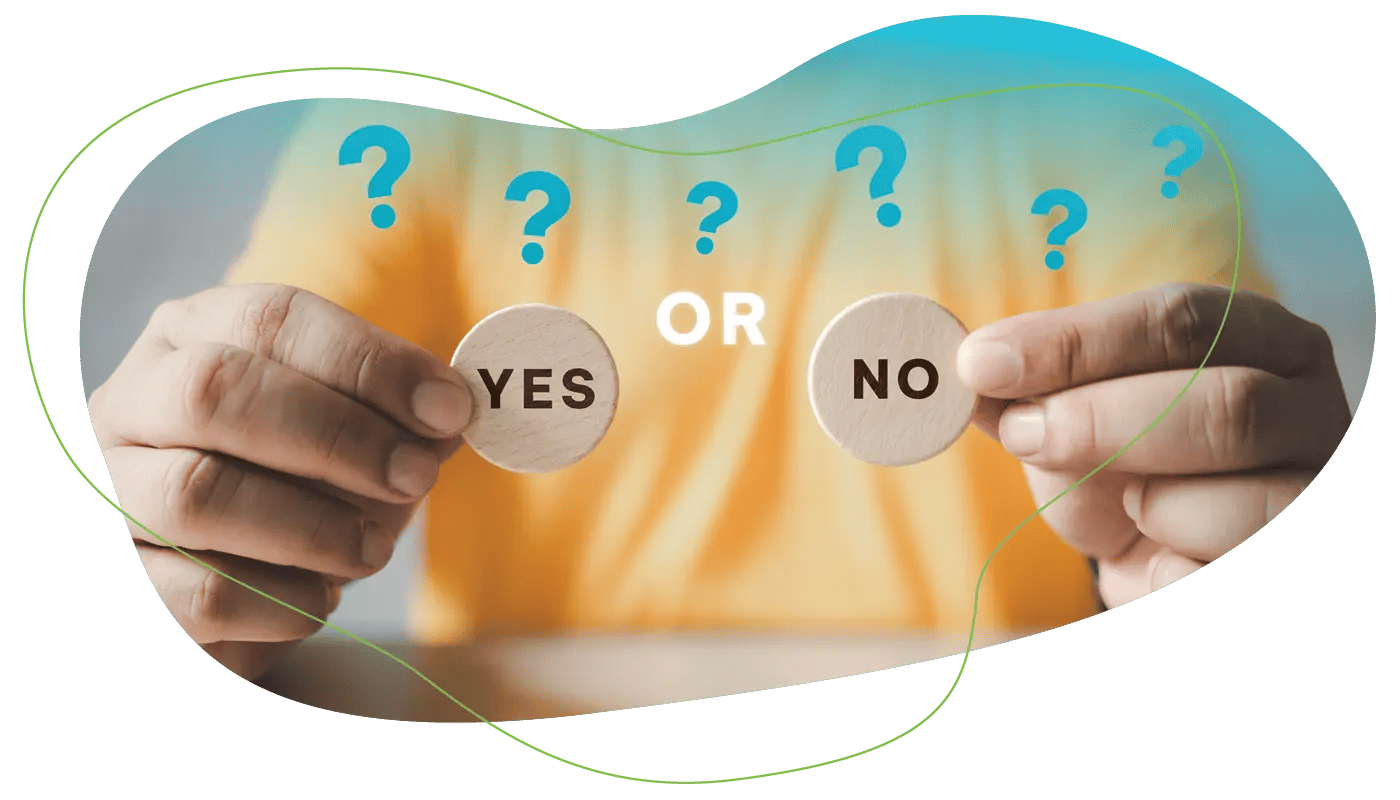
What might this look like for your nonprofit?
- A direct mail postcard can include a personalized donation request and a QR code prospects can scan to get to your donation page.
- A (free!) SMS campaign in which you share a compelling impact story and ask recipients to reply with a code word (nothing complicated, something like “donate”) after which they get a link to your donation page.
- What about social media? If you’re scrolling through Twitter or Facebook over Thanksgiving and you see a campaign to end childhood hunger, you might be pretty willing to drop $25. Think of images and stories you can share that will quickly grab attention and promote online sharing.
- Online advertising can also reach many people quickly. Look into Facebook ads or Google Ads and see if they fit into your budget. These ads ask for immediate donations, and one-click takes users to your donation page.
- Pick up the phone! You heard it right…give cold calling a shot. People will likely hang up on you, but if you can get a decent percentage of those to listen to the impact your nonprofit has, it’s worth your time. What if you get sent to voicemail? Leave a message, but lead with impact. Start by sharing the difference a donation will make, then back into who you are and how to proceed.
- Of course, we love email as outreach, and a heartwarming story, a colorful image, and a prominent “Donate now!” button will work.
- Some of our biggest clients love DRTV, or Direct Response Television. Surely you’ve seen the ads from Wounded Warrior Project during a Superbowl! Those are insanely effective. However, not many of our clients have a television ad budget (let alone a TV ad SUPERBOWL budget!) but maybe your local TV or radio station would give you a little free airtime to make a plea.
For all of these, segment your donors and approach them in a way that will speak to them. My grandma is definitely not going to see your TikTok reel, but if you call her on a Saturday morning, she’ll talk to you for hours.
Donor Acquisition Strategy #4: Tap Your Lapsed Donors
At some point, we all say goodbye to a list of people who just aren’t interested in us anymore. In your case, it’s probably lapsed donors that fell out of your system because they haven’t even glanced in your direction in a long time, like 6+ years.
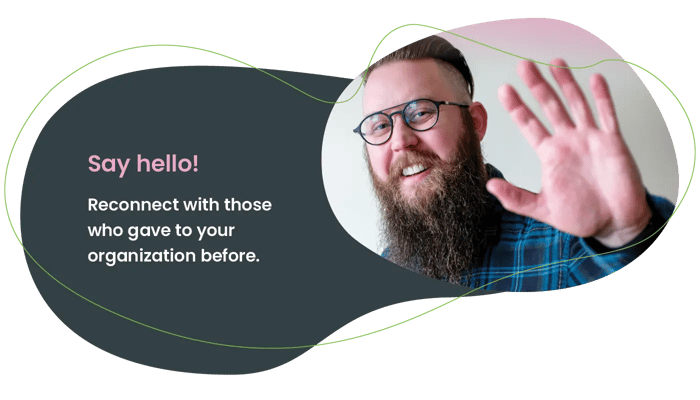 Is this a gold mine to find new donors? Well, sort of.
Is this a gold mine to find new donors? Well, sort of.
- These people can give.
- They want to give.
- They have given.
- They’ve given to your nonprofit.
And the “sort of” comes in just because…
- They stopped giving to your nonprofit.
- They haven’t started back up.
That’s okay! We can work with that.
Maybe your CRM is your secret weapon. Did you note efforts to re-engage each donor, or reasons why they left? Were they donors but also volunteers at events and they moved? See if you can get any intel on why they lapsed. If you know, you can address it specifically.
If you don’t, then take a look at your messaging. Has it evolved and changed? Or should it evolve and change?
Finally, segment this list (yes, we say it often, because it’s so important for personalized outreach!) and then decide the message and channel for each subset.
Think of these donors as warm, not cold. You had them once, so there’s something compelling about your mission or your nonprofit. Double down on whatever that is. Maybe it’s financial transparency. Maybe it’s impact stories. Maybe it’s because you run radio ads that make grown women cry in traffic (looking at you, St. Jude Children’s Research Hospital). Whatever you do well, do more of it, to the right people, at the right time.
Donor Acquisition Strategy #5: Get Your Website Working for You
It’s known that a website can be your single most influential marketing tool, and this is true for nonprofits as well. There’s no limit to the traffic you can attract, and of course, we could talk forever about search engine optimization and other traditional marketing focuses that can help get traffic flowing. But for right now, let’s talk about different aspects of an effective nonprofit website.

- You want your website to look good at first glance. This means plenty of white space (no cramped elements), minimal text, compelling images, and a clear mission statement.
- Include impact stories so prospective donors are drawn in by both the need and their ability to help meet it.
- Offer transparency to build trust right from the start. How do you allocate your funds? Can you publish the annual report prepared for the Board?
- Make volunteer opportunities obvious. If you attract volunteers, they’re one step away from being donors.
- Allow visitors to sign up for your email newsletter.
- Include social media sharing buttons to help spread awareness of your mission and your nonprofit.
- Ask a friend to do simple tasks on your website: make a donation, search for leadership, find your mission. Watch them and see if there’s any confusion. You want crystal-clear navigation.
- Of course, your website should be responsive so it can be viewed on mobile devices, and accessible to those with disabilities.
- Your donation form is probably the most important page on your website. Make sure it’s branded and it’s clear and easy to use. Ask for the least amount of information you need to process the donation. Always give suggested gift amounts and leave one that says something cute like “My best gift” so users can enter a custom amount. Prompt them to make it a monthly gift! And when you can, tie gift amounts to tangible impact. If $10 feeds a family of four for two days but $25 feeds them for a week, many more donors will click that higher amount.
Use your CRM to see how many visits you get to your website. Then see how many visits you get to your donation page. Then check your conversion rate – of those who hit your donation page, how many of them donate? A 15% to 20% conversion rate is healthy. Looking at each of those metrics is critical to learning where you’re losing people; this gives you a blueprint for getting them to stay on your site and make a donation.
Donor Acquisition Strategy #6: Give Something Good
You might be thinking, “Lady, we’re trying to get new donors. Not give something away!” And, of course, you’re right. Unless giving something gets you more donors.
Let’s lean on a successful technique…content. You’re reading this, so you’re interested in learning ways to improve your donor acquisition rates. We have valuable insight to share because we’ve helped hundreds of nonprofits, of all sizes, grow. And one way they grow is by smashing donor acquisition targets…so we know a few things that can help you.
What do you know that people might be interested in? You could write a social media post, a blog, a white paper. Perhaps it’s a deep dive into your mission. Find a subject people would want to read about. Then offer it in return when someone donates.
Wounded Warrior Project offers a blanket when someone donates $19 or more. This is a highly effective donation form.

If you don’t have intellectual property or swag you can offer to new donors, what about a tour of your facilities? A Zoom call with your Board? An invitation to a new donor event? Offer something to sweeten the deal and new donors will respond.
Donor Acquisition Strategy #7: Call on Corporate Connections
Do you have a matching gift button on your website? (If not, you need one. It’s free money!) If so, look in your trusty CRM to see which corporations have matched gifts. Or look for local offices that might want to give back to your community. Tap the companies where members of the board or advisors (or their spouses) work. Make a list of all of these friendly corporations.
Then approach them honestly and explain your mission and ask if you or they can reach out to their employees. Any level of assistance – whether it’s sending volunteers to an event for half a day or sending an email to employees or creating a matching gift program – can help you acquire new donors.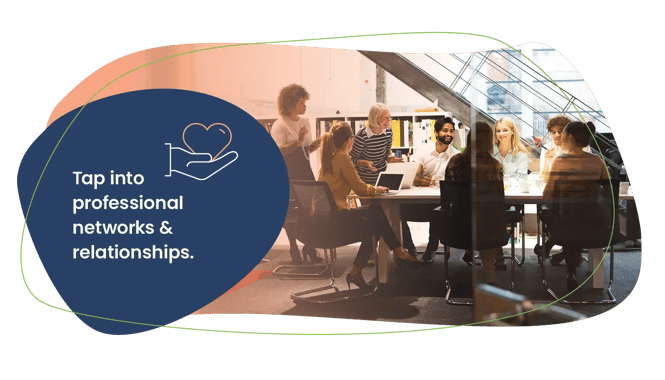
You can also ask them for sponsorship. While this isn’t a direct donor acquisition strategy, it spreads brand awareness and cements a partnership.
What about referrals? Can a friendly corporation think of a pool of people who might care about your mission? For example, perhaps a local executive knows the owners of a bookstore. If your mission is getting books to underprivileged children, every person who walks in that bookstore is a potential donor for you. An introduction can open doors.
And there’s always advocacy that leads to awareness. If a corporation publicizes its support for you internally, those potential donors might be compelled to give.
Donor Acquisition Strategy #8: Plan a Great Party
Events are an easy, fun way to collect new donors! You can plan a fun run/walk and have the admission fee be a donation to your cause. You can have a bake sale, a putt-putt tournament, a dunk tank at a fair. Every time you collect a penny, you’re collecting new donors.
If your nonprofit puts on a gala or auction, consider everyone who bought a ticket a new donor.
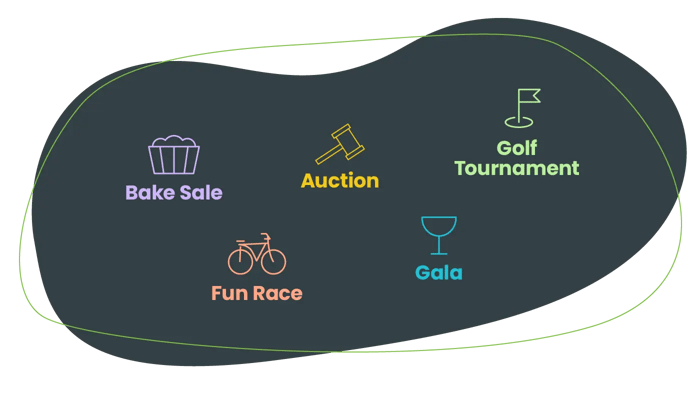 Can you host an educational workshop about your mission? If you’re a food bank, can you enlist a local chef to offer a cooking class? All of these events require ticket sales, and ticket sales are donations to your nonprofit. Offer a receipt!
Can you host an educational workshop about your mission? If you’re a food bank, can you enlist a local chef to offer a cooking class? All of these events require ticket sales, and ticket sales are donations to your nonprofit. Offer a receipt!
An easy way to get your current donors to find new ones is through a peer-to-peer campaign. These campaigns can be national in scope and are highly effective at finding new donors. You can deputize your current donors to raise money and find new donors, and when you divide them into teams and make it competitive, it’s even more successful!
Think creatively about what you could do to bring people together and have a good time while supporting your nonprofit. It can be a concert, like our friends at Phoenix Boys Choir, or a cocktail party, like our buddies at Rescue Village. With every event, you will have an influx of new donors ready to support your cause.
Donor Acquisition Strategy #9: Count on Direct Mail
Would it shock you to hear that one of our largest clients gets 80% of its revenue from direct mail? And that’s not all from existing donors. Direct mail brings in new donors quickly.
In our neighborhood, the local firefighters have figured this out. They’ll send a postcard and when you donate, they’ll arrange to have your house numbers on the curb repainted. What a win/win! They raise money and get a new donor, and you’re safer because those same firefighters could see your house number if you called on them at night.
 While that doesn’t work for other nonprofits, the idea does. You send a direct mail piece widely. It conveys your mission and your impact. You offer multiple ways to give: mail a check, visit a website, scan a QR code, call a phone number. Right there, you’ll get new donors.
While that doesn’t work for other nonprofits, the idea does. You send a direct mail piece widely. It conveys your mission and your impact. You offer multiple ways to give: mail a check, visit a website, scan a QR code, call a phone number. Right there, you’ll get new donors.
But what if you offered to add them to a holiday card list? Or what if you sent them a link in return, and it took them to a video detailing the impact your nonprofit has had? What if you promised to send them the recipe for the award-winning apple pie your team loves?
In an era of i-everything and digital everything else, there’s something solidly reassuring about direct mail. The only costs are printing and a stamp!
We’re huge advocates, if you can’t tell, of taking one message and working it into many channels. When you can send a mail piece that leads to the phone or your donation page, you’ve reached more donors than you would have using one single channel.
Donor Acquisition Strategy #10: Get Google to Help!
We’ve given you nine strong tips to help you increase donor acquisition. For our tenth, we’ll go out on a spectacular note: Use the tool that can solve every other problem, and lean on Google.
Specifically, lean on Google Ad Grants.
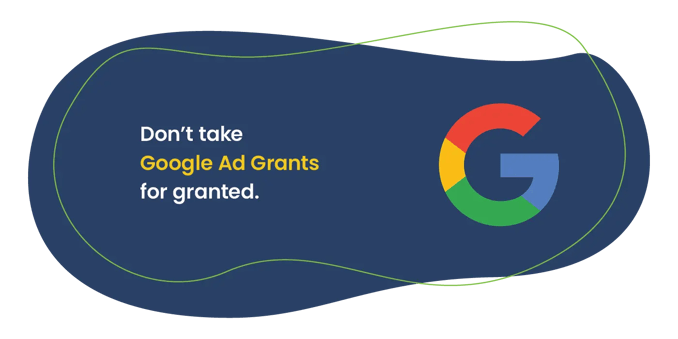
We love this tip because Google gives nonprofits up to $10,000 per month in search ads. And while we talked about Google Ads and Facebook Ads, those are great. But free Google Ads are even better, wouldn’t you agree?
The success stories are remarkable. An organization called Samaritans raised almost $50,000 in online donations. Days for Girls saw an average donation of $212. DonorsChoose.org brought in more than 5,000 donations to public schools.
So who is eligible for Google Ad Grants?
- You must be registered as a charitable organization in a country where Google for Nonprofits is available. (It’s available in the U.S.)
- You have to meet the requirements of that country. (In the U.S., you must be a registered 501(c)(3) organization.)
- You can’t be a governmental organization, a hospital or healthcare organization, or a school, academic institution, or university. (They’ve got Google for Education for that.)
As you can see, many nonprofits are eligible to apply.
Once you apply, you log in and activate your proposal. That submits it for review. As soon as it’s approved, you can plan, build, and launch a campaign – for free – with Google.
(And don’t worry. The website walks you through all of this, step by step.)
We can just about guarantee that $10,000 in Google Ads will help your donor acquisition efforts. It takes a little work from you to apply, and we mean just a little! Then you sit back and let the power of Google work to find you new donors.
Donor Acquisition Is Just the Start
Now that you have ten ways to get new donors in the door, you need to embark on the donor retention process, which also involves leaning heavily on your CRM to do the heavy lifting. A good rule of thumb is to find technology you like (and there are a lot of good choices) and then leverage all the data that goes into it to show you how to find and then keep donors.
CharityEngine often publishes content designed to educate and inform nonprofits, not to sell our technology. If you liked this article, sign up for our newsletter. Most of (if not all!) our articles are shorter than this one, and we can promise you’ll learn a few things along the way.


.png)
.png)